No products in the cart.
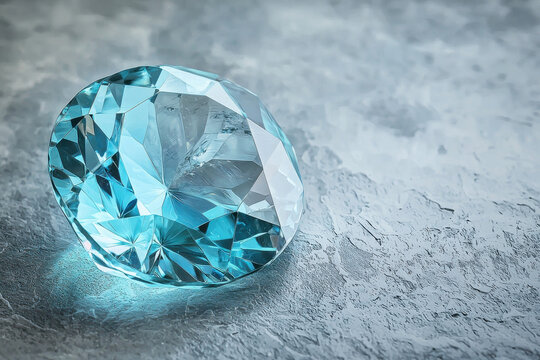

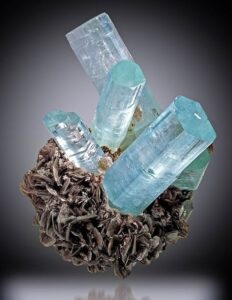
Aquamarine is a variety of the mineral beryl, which also includes gemstones like emerald and morganite. Its name is derived from the Latin words “aqua” (water) and “marina” (sea), a nod to its serene, ocean-like appearance. Aquamarine is primarily found in a range of pale blue to deep blue-green hues, with the most sought-after stones exhibiting a rich, saturated blue.

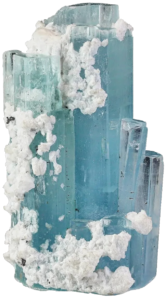
Aquamarine’s color is caused by trace amounts of iron within its crystal structure. It ranks 7.5 to 8 on the Mohs hardness scale, making it a durable gemstone ideal for everyday jewelry. Due to its excellent clarity and transparency, aquamarine is often cut into faceted shapes to maximize its brilliance.

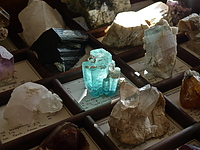

Throughout history, aquamarine has been associated with various myths and legends. Ancient sailors believed it was a talisman that ensured safe voyages across stormy seas. In medieval times, it was thought to be an antidote to poison and a stone that promoted clarity of thought. Aquamarine was also used by ancient Romans as a symbol of youth and happiness.
Aquamarine is widely regarded as a stone of tranquility, courage, and communication. It is believed to promote inner peace, soothe stress, and enhance clarity of mind. The gemstone is also associated with trust, harmony, and emotional balance, making it a popular choice for those seeking serenity and spiritual growth.

The finest aquamarines are mined in Brazil, which produces stones with exceptional clarity and color. Other notable sources include Madagascar, Zambia, Mozambique, Nigeria, and Pakistan. Each region produces aquamarines with unique variations in hue and quality.
With its relatively high hardness, aquamarine is suitable for most types of jewelry, including rings, necklaces, earrings, and bracelets. However, it should be protected from hard knocks to prevent chipping. To clean aquamarine jewelry, use warm soapy water and a soft brush. Avoid harsh chemicals and ultrasonic cleaners, as they may damage the stone.

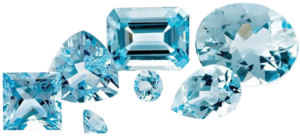
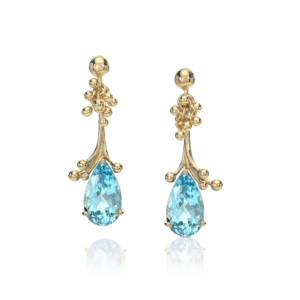
Aquamarine’s versatility makes it a favorite among jewelry designers. From simple solitaire rings to elaborate statement necklaces, this gemstone adds a touch of elegance and sophistication to any piece. Some popular aquamarine jewelry styles include:

Santa Maria aquamarine is a deep blue-green color of the beryl mineral. It’s a semi-precious gemstone that’s known for its eye-clean clarity.
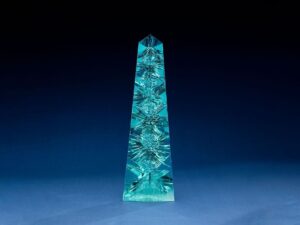 The Dom Pedro – The World’s Largest Cut Aquamarine
The Dom Pedro – The World’s Largest Cut AquamarineThe Dom Pedro is a true marvel in the world of gemstones. Weighing an impressive 10,363 carats, it holds the title of the largest cut aquamarine in the world. This magnificent gem was discovered in Pedra Azul, Minas Gerais, Brazil, and it is named after the first two emperors of Brazil, Pedro I and Pedro II.
Measuring approximately 14 inches long and 4 inches wide, the Dom Pedro showcases a perfect combination of attractive color and exceptional clarity. Renowned gem cutter Bernd Munsteiner from Germany masterfully cut this crystal in a style that beautifully enhances its natural beauty. The result is a breathtaking gem that captivates anyone who lays eyes upon it.
The Dom Pedro is a testament to the incredible artistry and skill of gem cutting. Its stunning blue hue and impeccable craftsmanship make it a true masterpiece.
Displayed at the Smithsonian Institution’s National Museum of Natural History, the Dom Pedro continues to awe visitors from around the world. Its immense size and remarkable color make it a standout among aquamarine gems, solidifying its place as one of the most extraordinary gemstones ever discovered.
Aquamarine, the March birthstone, is a gemstone of beauty, serenity, and deep historical significance. Whether worn for its aesthetic appeal, its symbolic meaning, or its connection to the calming energy of the ocean, aquamarine continues to be a cherished and timeless gem. Whether you’re celebrating a March birthday or simply drawn to its soothing hues, aquamarine jewelry is a perfect choice for anyone who loves elegance and tranquility